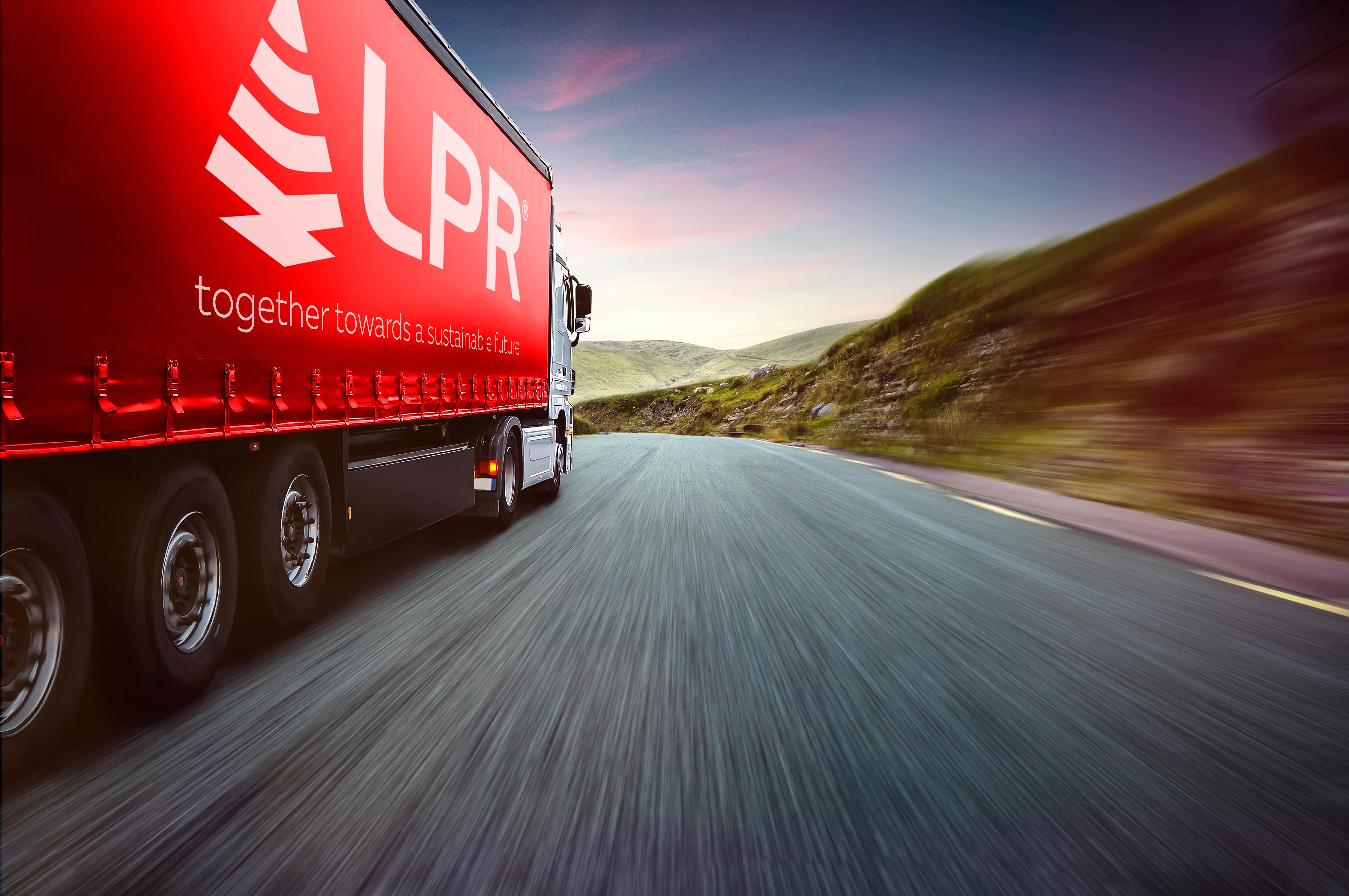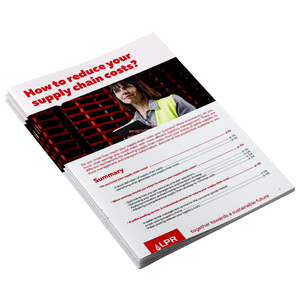Transport is at the heart of the supply chain: it plays a key role from supply, through to delivery.
It is not always easy to know which mode of transporting goods to choose, especially since not all of them are suitable for all supply chains.
In this article, we discuss the advantages and disadvantages of the transport options available.
Quick Navigation:
2 - Air freight, a fast and safe mode of transporting goods
3 - Transport of goods by boat - the most cost effective option
4 - The transport of goods by road, difficult to escape
5 - How about choosing multimodal freight transport?
6 - How new technologies are boosting the efficiency of multimodal transport
7 - Questions to ask when choosing the right mode of transportation for your supply chain
1. Why choose rail?
1.1. The advantages of freight transport by train
Commercial rail transport, born in the UK, is renowned for its safety, speed and efficiency.
The main advantage is that it can carry a significant volume of goods. On average, a train carriage can carry up to 125 tons of goods. Trains can be made up of a hundred carriages, thus offering a total transport capacity of more than 12,500 tonnes of goods. Thanks to its competitive price, it remains an economical and profitable means of goods transport.
Train transport is generally faster than road, as it is not affectedby traffic. It is also faster than sea freight: for example, the Silk Road railways that connect China to Europe, can cut transport times in half, when compared to transport by boat.
Finally, the train has a significant advantage over other means of transport: it is the most environmentally friendly, because it usually runs on electricity.
1.2. The disadvantages of transporting goods by train
Transporting goods by rail has some drawbacks.
Infrastructures that allow goods to be loaded onto trains are often poorly located, which can make it difficult to link rail and road transport options together.
This leaves little flexibility on routes and itineraries. Trains are also unable to undertake door-to-door deliveries. If you choose rail transport, it is therefore necessary to combine it with another form of transport to deliver the goods to their final destination (usually by road).
Transit times may also be lengthened due to the loading and unloading of goods and there may also be a need to change railway company at border stations. The handling requirements are then more onerous.
Finally, the risk of damage (damage to goods during manufacture, transport or storage) can be significant when using rail (as a result of derailment, objects obstructing the rails, etc.) which can lead to additional delays in delivery that impact the wider supply chain.
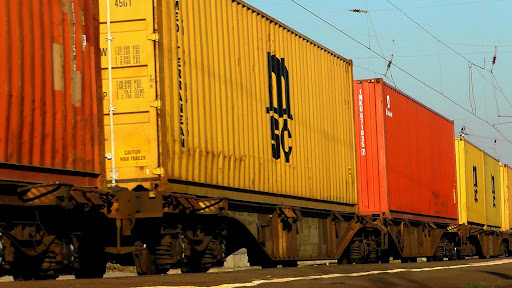
2. Air freight, a fast and safe mode of transporting goods
2.1. The advantages of air freight transport
Air freight is the fastest way to make long distance and/or urgent deliveries.
Airports offer strong geographical coverage for companies from all over the world. Air freight is particularly well suited to the transport of perishable foodstuffs, fragile products, and products of high value. It is also the most secure mode of transport due to government-mandated security requirements and the presence of police at every airport. Flight reliability and regularity allows you to plan and optimise the organisation of your logistics.
The diversity of air transport modes allows a wider choice of options to suit your needs:
-
Freighters are aircraft used to transport goods and have a capacity of 70 to 110 tons.
-
“Combi” type aircraft are used for both freight and passenger transport. They have rails for easy removal of seats as well as a cargo door.
-
Some aircraf tused for passenger transport, can arrange their holds to also carry freight, meaning they can transport up to 500 passengers and 20 tons of goods.
Should you need to move your goods urgently, air transport offers a number of options due to the high numbers of flights available. The goods are transported via standardised containers and pallets, which facilitates loading and unloading operations.
2.2. The disadvantages of air freight transport
The reliability and speed of air transport makes it the most expensive mode of transport. To make air freight profitable, it is more suited to high value loads.
Air transport has had a massive impact on global pollution and accounts for more than 11% of global CO2 emissions.
Finally, air freight is not suitable for all types of goods (volume and weight), customs procedures can lengthen delivery times and bad weather can lead to flight delays or cancellations.
3. Transport of goods by boat - the most cost effective option
The transport of goods by boat is the most economical means of transport, but is also the slowest. It is divided into two categories.
-
Sea freight is navigation on the high seas. It brings goods to ports located on coastlines in coastal waters. This makes it possible to deliver to countries that cannot be accessed by land.
-
River freight used in land waterways and allows goods to be transported across a country or continent.
3.1. The advantages of transporting goods by boat
Choosing sea and river transport is an economical and ecological solution for transporting goods which are not urgent.
Choosing maritime transport is a cost effective form of goods delivery. Container ships can carry huge amounts of cargo. Depending on the boat, they can carry between 500 and 3,000 containers. This mode of transport adapts particularly well to heavy goods (such as cars). Customs fees tend to be lower than those for air transport.
In addition, if the company cannot completely fill a container, it can use maritime groupage. This consists of sharing a container with one or more companies in order to make the container profitable and share costs.
River transport, on the other hand, makes it possible to transport large volumes and still offer a reliable delivery time. It is not (usually) affected by traffic jams or bad weather at sea, although this can happen in rare cases.
In Europe, the river network offers an effective network to reach big cities. River freight allows the delivery of goods, but can also be used to store large quantities on the water. This is called floating stock.
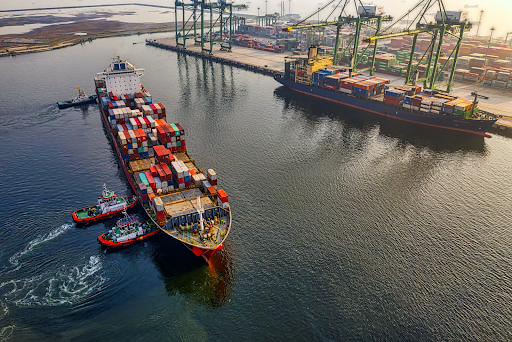
3.2. The disadvantages of transporting goods by boat
Choosing sea and river transport, however, has a major drawback - speed!
In fact, it can sometimes take several weeks to connect two countries that are practically neighbours. This mode of transport is certainly not suitable for perishable goods and urgent deliveries.
In addition, it is difficult to accurately track your goods when they are at sea. This can cause traceability issues and cause a lack of visibility in your supply chain.
Finally, not all countries have access to sea or port infrastructure. As with rail or air transport, it is therefore often necessary to make detours to complete the “door-to-door” delivery in tandem with another mode of transport.
4. The transport of goods by road, difficult to escape
Transport by truck is an almost obligatory step, regardless of the means of transport you have chosen. It allows you to transport your goods to the door of your customers, from a station, an airport, a port or directly from your logistics sites.
4.1. The advantages of transporting goods by truck
Road freight makes it possible to go everywhere, even to the most remote regions.
Transit times are shorter and load handling is simpler than loading an airplane, a train, a boat or a cargo ship.
Road transport is by far the most flexible in terms of schedules and routes thanks to the extensive road network.
Businesses like Shippeo can help you to have increased traceability of your goods. These solutions, based on automation and artificial intelligence, make it possible to monitor the progress of goods in real-time, to control transport operations and to be able to inform customers in real time of any potential delays. This real-time information helps increase performance and optimise your supply chain.
4.2. The disadvantages of transporting goods by truck
Road freight, despite its flexibility, is highly dependent on road traffic, which is often congested in large cities. This causes delays in delivery and the supply chain.
Trucks cannot transport large volumes of goods. In cases of high volume, it is necessary to have a large fleet of vehicles. This multiplies costs per truck and increases greenhouse gas emissions linked to road transport.
Road transport is already a high polluting mode of freight transport in terms of the ratio of quantity transported/distance/CO2 emitted.
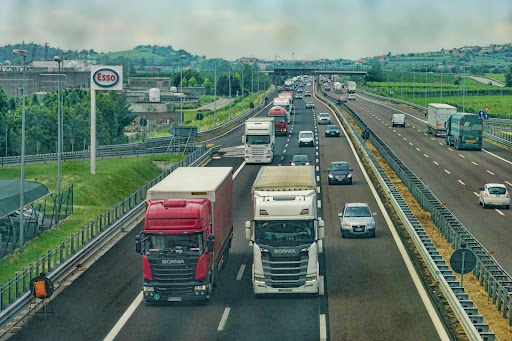
5. How about choosing multimodal freight transport?
Multimodal transport consists of using several different types of transport, whether road, river, sea or air.
Often, road transport makes it possible to carry out the first and last miles of a delivery regardless of the means of transport chosen (plane, train, boat). Multimodal transport never involves splitting goods: the loading unit does not change from the beginning to the end of the delivery.
5.1. The advantages of multimodal transport
Multimodal transport has many advantages and is a popular choice for supply chains. It allows you:
-
Improved delivery times by switching between different modes of transport and optimising routes.
-
To manage the capacities and speed of loading while reducing environmental impact thanks to the non-breaking of load.
-
Adapt the mode of transport according to the infrastructure to avoid detours.
Finally, thanks to multimodal transport, you can deliver anywhere in the world by linking the different modes of transport together: maritime transport then river transport, air transport then train transport, for example.
5.2. The disadvantages of multimodal transport
Multimodal transport can complicate logistics processes. It sometimes becomes more difficult to track goods in real-time and especially to coordinate the different means of transport.
If a single link in the chain fails, the entire supply chain is put at risk.
As the stakes are high for supply chains all over the world, new technologies have emerged in order to minimise the disadvantages of multimodal transport: new solutions for traceability, acceleration of delivery times... all in an attempt to further optimise the supply chain.
6. How new technologies are boosting the efficiency of multimodal transport
One of the main challenges of the supply chain is to meet supply and delivery deadlines. However, regardless of the transport you choose, events can disrupt these deadlines: bad weather, accidents, blocked ports, power failure, traffic, etc.
Fortunately, solutions exist that allow you to monitor the progress of your goods or your raw materials in real-time. This allows you to adjust the logistics of your transport chain, but also to inform your customers in real-time of any delays or problems encountered with their delivery.
Shippeo is one such solution. Shippeo offers a predictive supply chain visibility platform that ensures the traceability of your goods even while they’re in the middle of the ocean.
Providing real support for transport management, it allows your company to anticipate problems in its supply chain (delays, loss of cargo, etc.) and offers increased visibility at all stages.
You can therefore optimise your logistics processes and ensure that your customer deliveries are on time. LPR - La Palette Rouge has already adopted this solution to optimise its own supply chain.
7. Questions to ask when choosing the right mode of transportation for your supply chain
To choose an efficient mode of transport for your supply chain, it is necessary to ask yourself the following questions:
What goods will you be transporting?
If they are perishable, fragile, bulky or even of high-value, certain modes of transport are preferrable. For example, do not choose sea freight if you want to transport perishable foodstuffs or medicines.
Where are you going to ship your goods?
Depending on the distance to be traveled and the different routes possible, whether road, sea or air, you will not choose the same modes of transport:
-
If the distance is short ; road or rail transport is preferred
-
If it is a long-distance ; the possibilities available to you are wider (especially thanks to multimodal transport). It is necessary to consider all available options.
What is the delivery time required by your customer?
Different modes of transport have different delivery times. Air and road transport remain the most effective in the event of urgency.
What infrastructure is available?
Not all countries and cities have the same infrastructure (ports, airports, stations). Depending on the country or city of delivery, adapt your mode of transport to the existing infrastructure to minimise detours and delivery times.
Choosing between transport and environmental considerations
Different modes of transport have varying impacts on the environment. It depends on the policy of your company and the profitability to be maintained: everything is a question of balance. The train is an environmentally friendly alternative for short distances. For longer journeys, transport by boat is preferred, depending on your budget.
What is the type of load you’re transporting?
If you have heavy and large volume loads, you will require maritime, river or rail transport. On the other hand, for a large quantity of small goods, opt for road or air transport.
In conclusion, every supply chain is unique, and the same can be said for its transport needs. This is why there is no single answer to the question: “Which transport should I choose for my supply chain?“
Transport is a key part of any supply chain. It represents both an economic and an environmental issue.
Authories and governments have their part to play, with extensive transport infrastructure investment required to enable a cleaner, more sustainable supply chain for the future.
If you would like to discuss your logistics issues with our business experts, you can contact them here. You can also access our other blog articles to learn more about supply chain and pallet pooling.

